|
 





Fi-Cord 1A
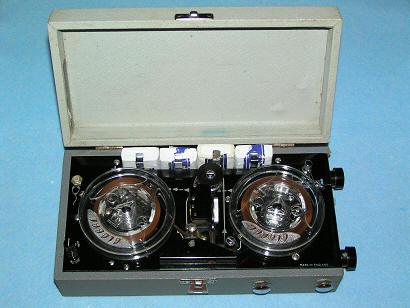
Used Google
translator
Fi-Cord 1A.
Portable reel tape recorder, the production of Fi-Cord
LTD, England.
This model of 1958 (see photo at the
bottom of the page), was used as a reporter tape
recorder, including the company BBC.
In 1960
in the United States
it was sold
at the price of $
330.
Dimensions recorder
230 x 120 x 65 mm without protruding parts. Weight 1,7
kg. Power supply voltage 8 v, the four lead-acid
batteries for 2 v. Building a wooden recorder, and is
inserted steel deck, which is mounted all the mechanics
and electronics. The soundboard is attached to the body
by three screws.
This is
a constructive
analog of the
Swiss recorder
Stellavox Sm4.
In
the explanation
to the photos
we have in mind
is Stellavox
Sm4
Photos from
the magazine "Electronics
Illustrated" №2 1960
year.
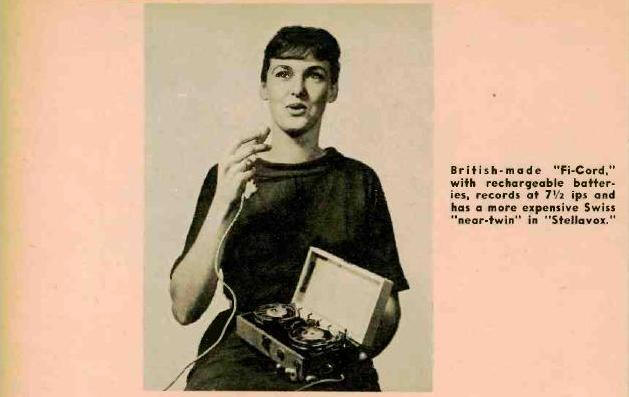
Kinematics of the recorder is simple,
but provides a stable speed of magnetic tape in two
speeds, 7, 1/2 and 1, 7/8 inches per second. Rewind
the tape in advance can let her directly, bypassing the
commercials, as shown by arrows on the deck recorder.
Rewind absent. Thrust pinch roller to the capstan by
means of roller - eccentric, located next to the head.
In addition to the switch speed on the deck are, jack
headphone jack, lever spring flow meter tape, and
push-off dynamics. She pressed when the lid is closed
recorder. Also next to a Moving bracket capable of
holding the button down when the lid is open. The lever
is pressed to the tape counter outside of the inlet
reel, and moves toward its center is proportional to
flow ribbons.
In doing so, the tape
counter, tightly associated with a lever is moved inside
the window, located on the right front side of the body. This lever also
creates the necessary tension of the tape.
Batteries are inserted down into
the bay, located along the rear of the chassis. The
sides of the body are four locking strap for carrying. On the
right-hand edge of the shell are the main elements of
control and display. At the left on it there is a switch
of operating modes. To the right is a connector for microphones,
fluorescent light above it the recording level, then the
indicator lamp power, connector
for connecting an external speaker, the window flow
meter tape, and volume control - the recording level.
Circuit
recorder rather complex, collected at 8 transistor type
GET3, and provides the bandwidth frequency amplifier, 50
Hz - 12 KHz. Six transistors used in the amplifier, and
two in the generator erasure. The
generator also creates erase voltage required to operate
the fluorescent indicator record. Inside the recorder,
everything looks beautiful. The
electronics board is collected accurately and mechanical
parts are made of high quality, as in all other models Fi-Cord.
In the kinematics used four rubber belt. Two of
them are very short used in the gearbox, combined with a
switch, belt speed. Two long pass traffic from the
engine to the flywheel, and the site rolling. The
flywheel is very solid, made of brass. The engine,
designed for voltage 3 v, has a centrifugal speed
regulator. On the engine has markings that tells them
that he made in Germany. The speaker is mounted on the
deck, where it drilled for 17 holes.
The
recorder produces a double impression. On the one hand
it operates normally, recording and reproducing quality
is good. However, it is
embarrassing wooden cabinet, a strange way of charging
belt, the belt from right to left, batteries, located in
the most conspicuous place.
The recorder was in defective condition. To improve its
capacity necessary to replace all four belt, replacing
dry time of electrolytic capacitors, and repair of the
universal head, winding which was on the precipice. The
design of sectional heads, and I was able to rewind one
of the windings, which was on the precipice.
Currently, the unit is in good working condition, but
the quality of the original microphone good enough, and
good writing can only be done using the microphone.
Сервис онлайн-записи на собственном Telegram-боте
Попробуйте сервис онлайн-записи VisitTime на основе вашего собственного Telegram-бота:
— Разгрузит мастера, специалиста или компанию;
— Позволит гибко управлять расписанием и загрузкой;
— Разошлет оповещения о новых услугах или акциях;
— Позволит принять оплату на карту/кошелек/счет;
— Позволит записываться на групповые и персональные посещения;
— Поможет получить от клиента отзывы о визите к вам;
— Включает в себя сервис чаевых.
Для новых пользователей первый месяц бесплатно.
Зарегистрироваться в сервисе
Photos
can be enlarged
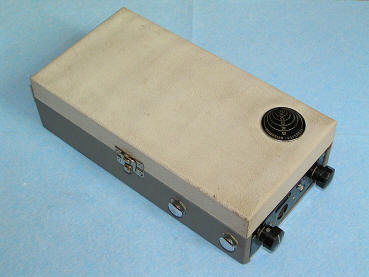 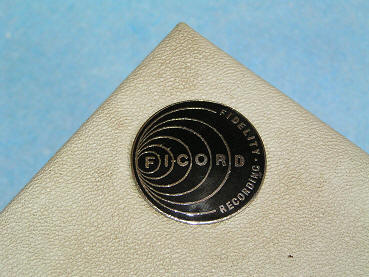 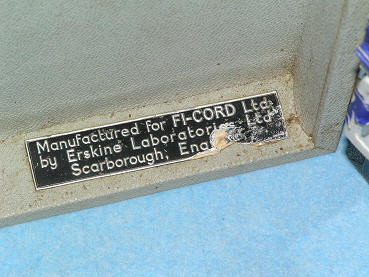 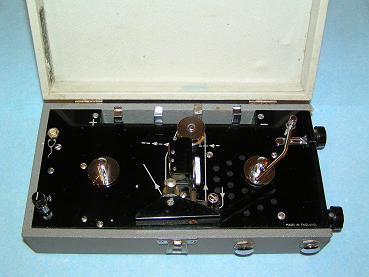 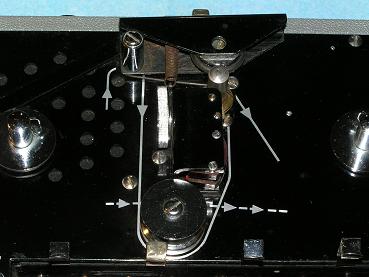 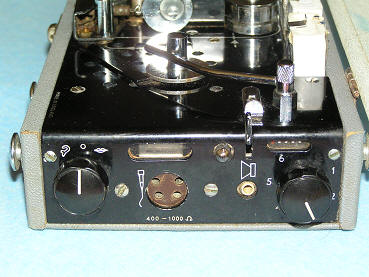
In the photo left switch speed magnetic
tape. The photo on the right are visible head, capstan
and pinch roller. Pinch roller has an unusual design. It
is made in the form of a disk headform conforming to a
rubber ring.
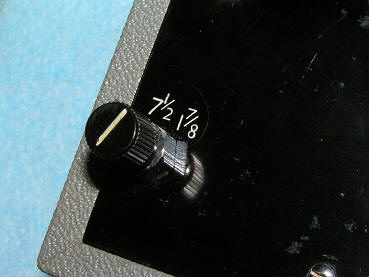 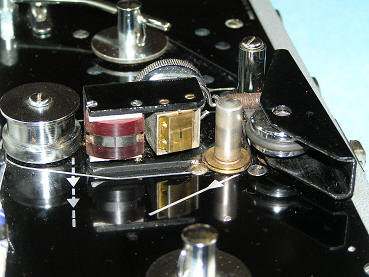
The photo on the left see eccentric,
through which pinch roller is pressed against the
capstan. The photo on the right - the battery
compartment.
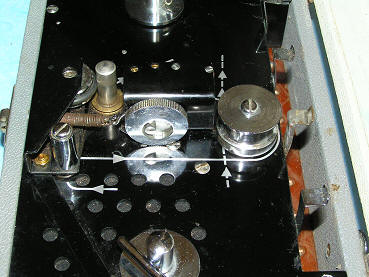 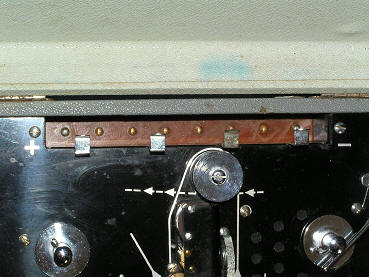
The photographs seen lever meter ribbon
and a button off the speaker. Button located on the edge
of the deck and pressed when closing the housing cover.
Next to the button is located Moving bracket that allows
to keep the button pressed when the lid is open.
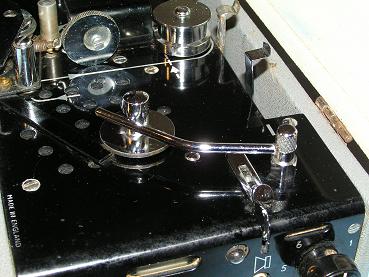 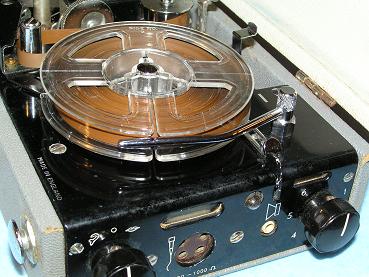 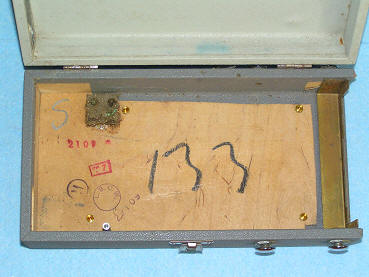 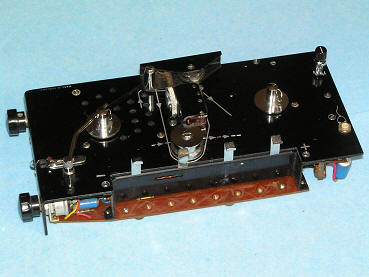 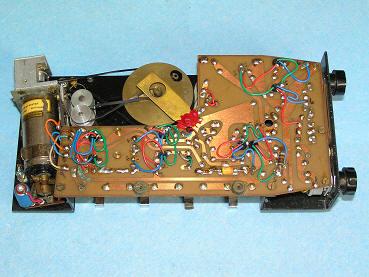 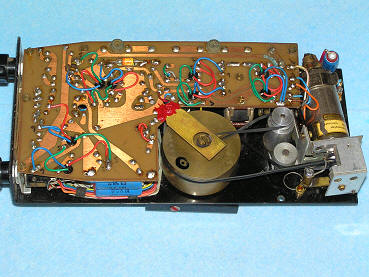
The rubber belt from
time lost elasticity, and stretched. They had to be
replaced. In the photo the old belt.
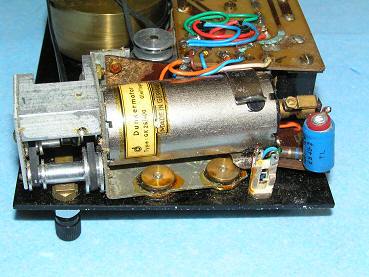 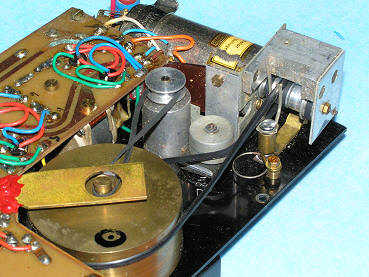 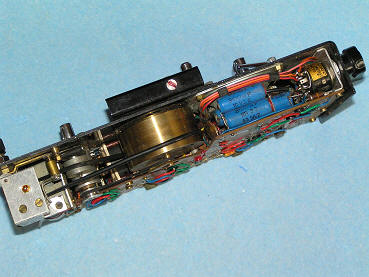 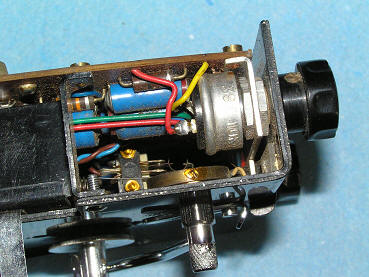 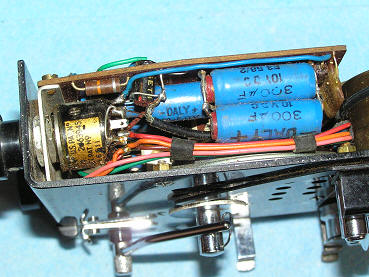 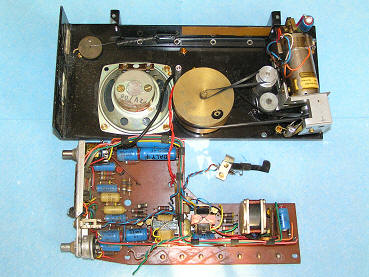 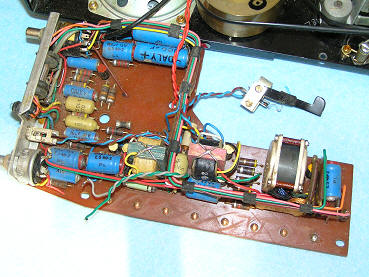 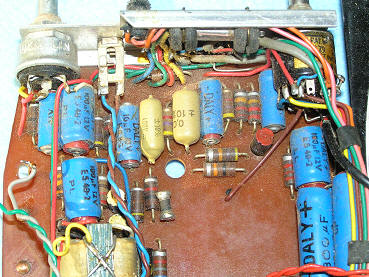 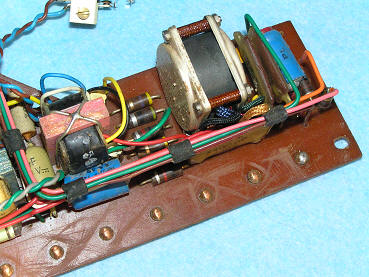 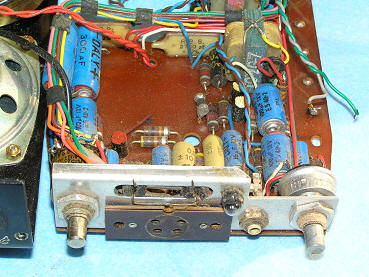
During the renovation had
to replace all the electrolytic capacitors. To preserve
the original look of the electronics board, I examine
the old capacitors, removed the aluminum liner interior,
and put them in the new capacitors are suitable
denomination and size. After assembling the capacitors
were obtained very similar to the original. In the
picture below can see the whole process of modernization.
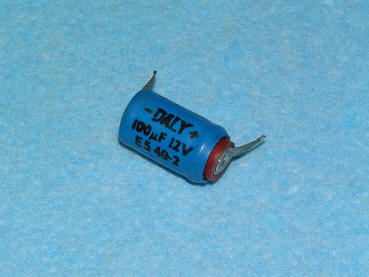
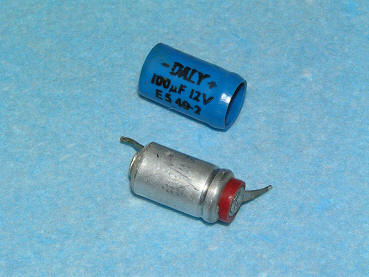 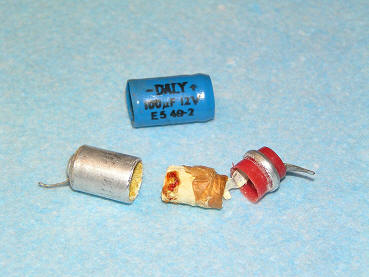
 

Gearbox, combined with the switch speed
magnetic tape.
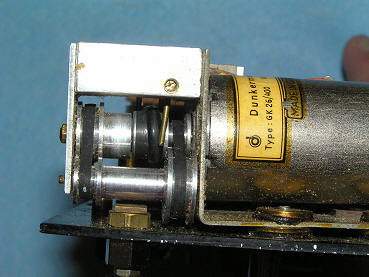 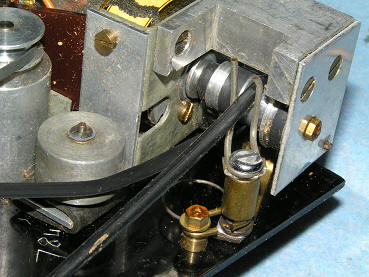 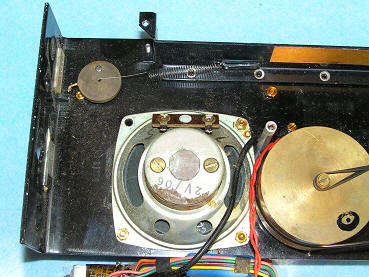 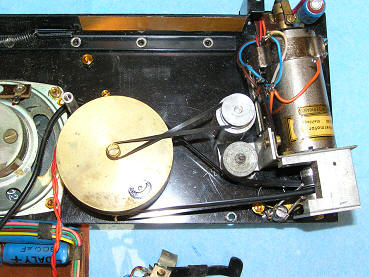 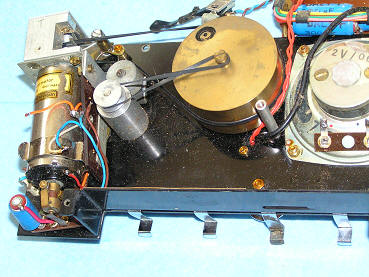 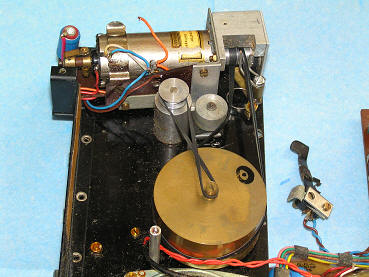
Photographs taken during the repair of
the universal head.

 
 
 

Lead-acid batteries with a voltage of 2
v. To their charge made special chargers. In the charger
had four indicator lamps of the charge, one for each
battery. When some of the batteries fully charged,
separated the gas in the space between the bank and the
plastic body battery. The body swelled, and pressed a
microswitch. This charge of the battery turned off,
and the light goes out. Size
of battery 43 x 32 x 13 mm. Weight 40
g.
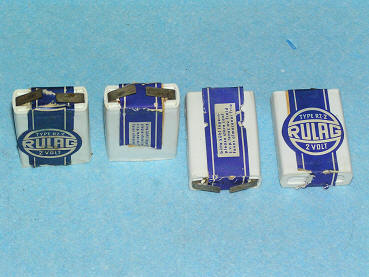 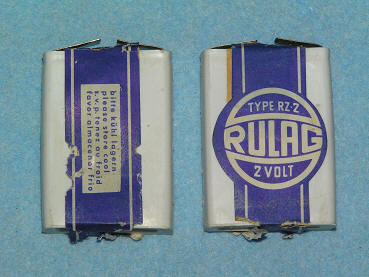
To demonstrate the tape I
made two batteries on 4,5 v, replacing the four original
battery.


Another version of self-made batteries
made on a 3d printer was presented to me by collector
Alexander Yurinov
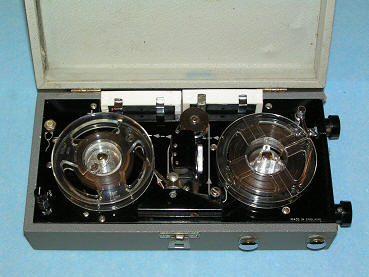
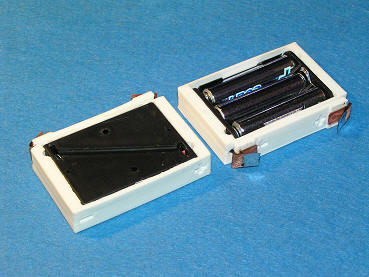
Belt, a microphone with remote activation
switch, cover, and shoulder leather bag.
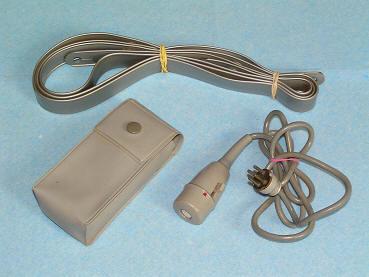 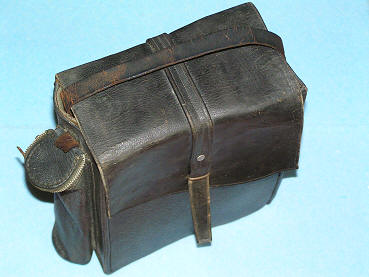
|
Photo from the
magazine "Radio-News" for November 58 |
|
Photo from the
magazine "Tape-Recording" for November 58 |
|
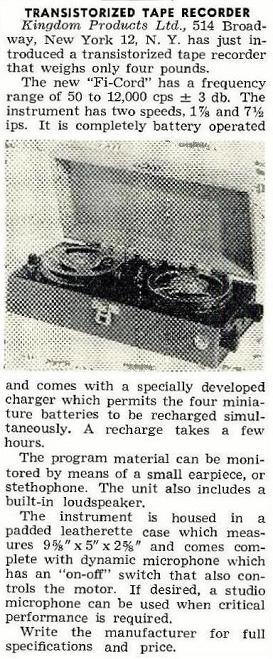 |
|
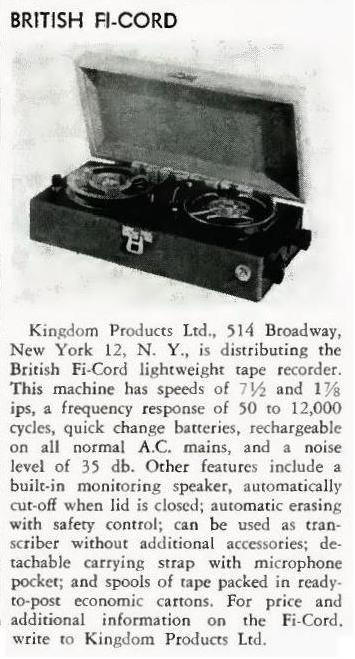 |


|

![]()
![]()
![]()
![]()
![]()
![]()
![]()


























































